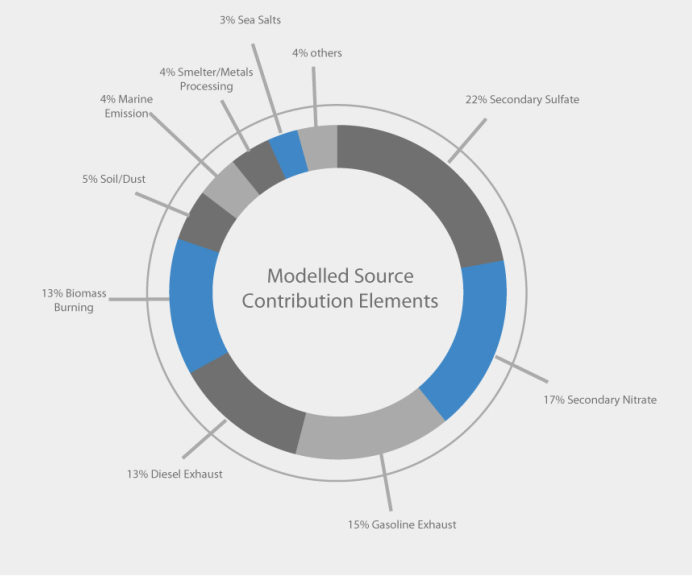Lab & Field Servies
XRF Air Filter Analysis
SCI is committed to providing high quality, competitively priced analytical results with rapid turn-around-times. We employ energy dispersive X-ray Fluorescence (ED-XRF) as our analytical technique to quantify the metals deposited on filters.
- Our lab is EPA approved for the analysis of PTFE and quartz PM2.5 speciation filters
- XRF is applicable to atomic numbers ranging from 13 (Al) to 92 (U)
Our detection limits are extremely low
- All spectroscopic results are traceable to NIST
- We can analyze particulate deposit diameters ranging from 0.1 cm to 20 cm
- Analysis of 25, 37, and 47 mm diameter filters is routine. High-vol (8× 10″) filters can also be analyzed by conducting the analysis on a circular punch
- Continuous sampling system tape analysis such as subsequent, off-line analysis of beta-attenuation monitor filter tape
Our Quality Management Plan is performed in accordance with EPA Compendium Method IO-3.3: For the Determination of Metals in Ambient Matter Using X-Ray Fluorescence (XRF) Spectroscopy.
Please contact us to learn more about our analytical services.
Consulting Services
We offer a complete set of services for receptor modeling studies including study design, data assessment and control strategies development.
Source Apportionment
SCI researchers have made major contributions to the development and application of source apportionment modeling and pioneered the use of receptor modeling methods in support of control strategies from federal to state implementation plans. We offer a complete set of services for receptor modeling studies including study design, data assessment and control strategies development. We perform source apportionment modeling using US EPA approved models, such as Positive Matrix Factorization, Chemical Mass Balance and UNMIX. A variety of multivariate analysis methods are also used to develop strong weight-of-evidence for source apportionment results. With over 40 years of combined experience and our continuing research in air quality management services, our clients are assured of the most innovative and contemporary approach to air quality data assessment.

Network Data Analysis
SCI provides innovative solutions for evaluating multivariate pollutant data sets collected across a network of ambient monitoring stations. A variety of statistical and graphical tools are used to gauge the spatial and temporal variability of the pollutants over the geographical region of interest. This allows for refined understanding of the various meteorological, topographical, and source emission patterns that facilitate identification of local source locations influencing pollutant variability. Thorough understanding of pollutant variability enables state and federal agencies in effective management of air quality. This also prevents exposure miss-classification in epidemiological studies conducted in support of health-based standards.

Methods Development
SCI prides itself in accepting clients’ unique technical challenges and providing them with results through our innovated technical solutions. Today, 50% of our recent method development projects employ X-ray Fluorescence (XRF) for trace metals analysis; however, we are actively developing non-XRF methods, such as aerosol generation, fugitive emissions sampling, and simulation of stack plumes.
Our method development capabilities have been recognized by the U.S. EPA with a Small Business Innovative Research (SBIR) award to study coal-fired power plant emissions. Our method development services have assisted companies and research institutes, such as:
- Midwest Research Institute
- Idaho Department of Environmental Quality
- American Petroleum Institute
- Electric Power Research Institute (EPRI)
- U.S. Army
- Eli Lilly Company
- Doe Run Company
